Rugs can sometimes be overlooked when it comes to their value and historical significance. But with the highest selling price for a Persian rug at auction in New York being $33.8m and everyday sales ranging from £3,000-£10,000, they could in some cases be more valuable than the oil paintings or sculptures which surround them.
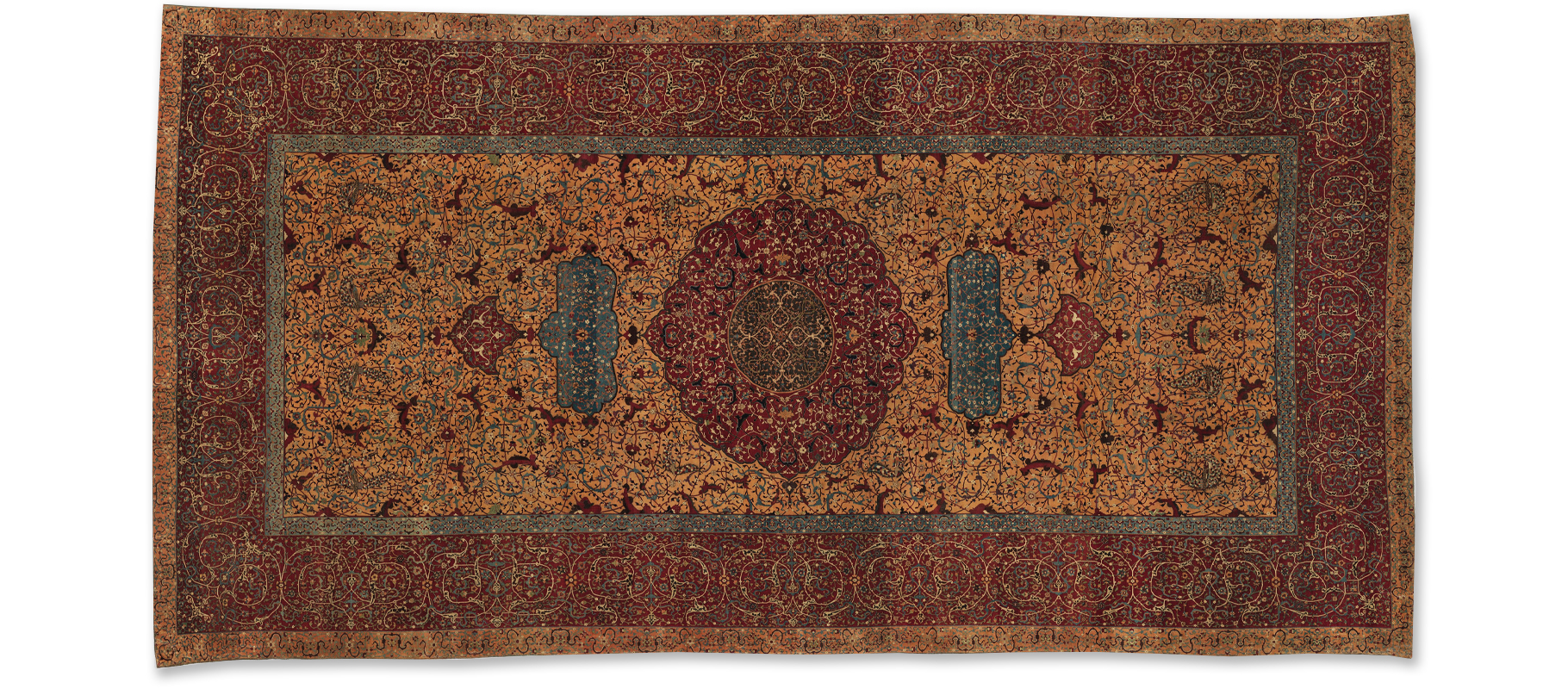
Many types of artwork, furniture and household items can face drastic deterioration due to water damage. When a household leak recently occurred in our client’s home, their valuable Persian rug was heavily affected by soiling and the running of colours in its intricate pattern. The excess water also put it in a vulnerable position for mould and mildew based decay. To understand why they are at such risks, the history of these detailed textiles helps us to understand their unique materials and patterns, as well as the reason for their frequently high valuations.
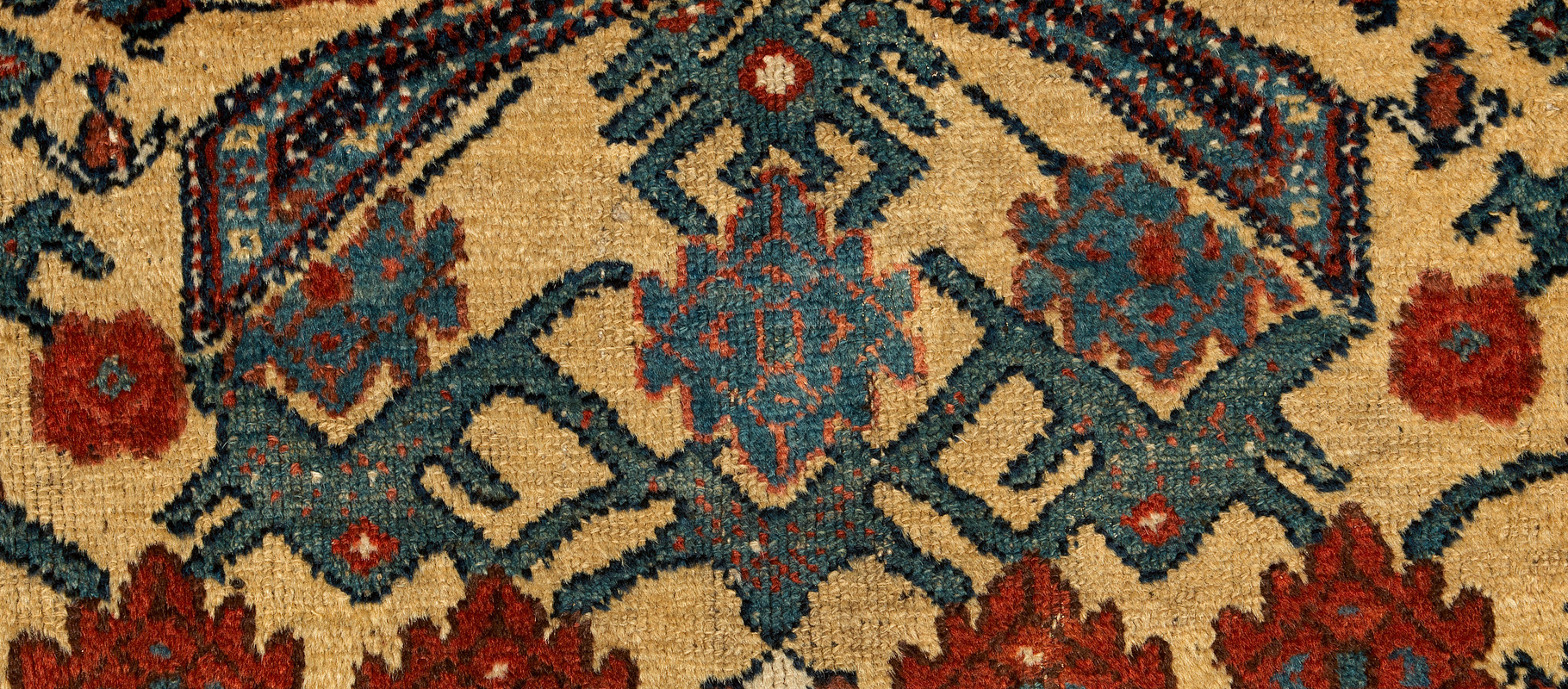
How do you define a Persian rug?
Persian rugs can be defined as a textile which has been handmade with a specific Persian knotting technique. As these rugs were made simultaneously throughout history by both royal workshops and nomadic tribes, they are a unique insight into the lives and traditions of vastly different people living within these areas, across many centuries.
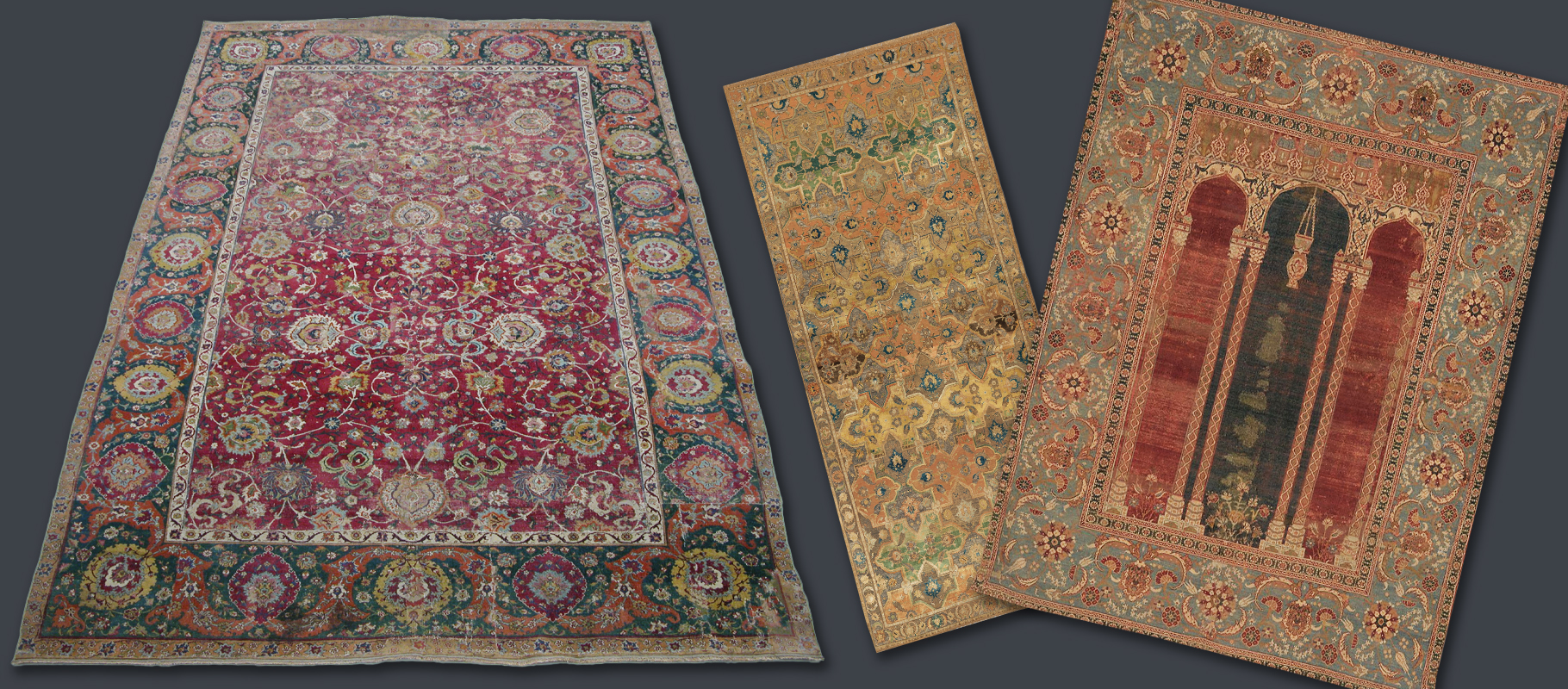
The value of a Persian rug comes from the preciseness of the pattern, with the highest-selling rug being prized for the precision of the shapes, as well as the geometrical spacing throughout the work. This valuable rug was from the 17th century, but the span of history for these textiles is very vast with the first example being 2,400 years old.

There are various types of Persian rug, depending on the way the wool has been knotted or the tapestry has been constructed. In the case of the Nain style rug which came to us for restoration, it was constructed with Persian knots which amounted to 300-700 per square inch. Different rugs have different spacing for their knots and this is central to their artistic style. The name of the technique is geographical, in this instance titled after the city of Nain in Iran.
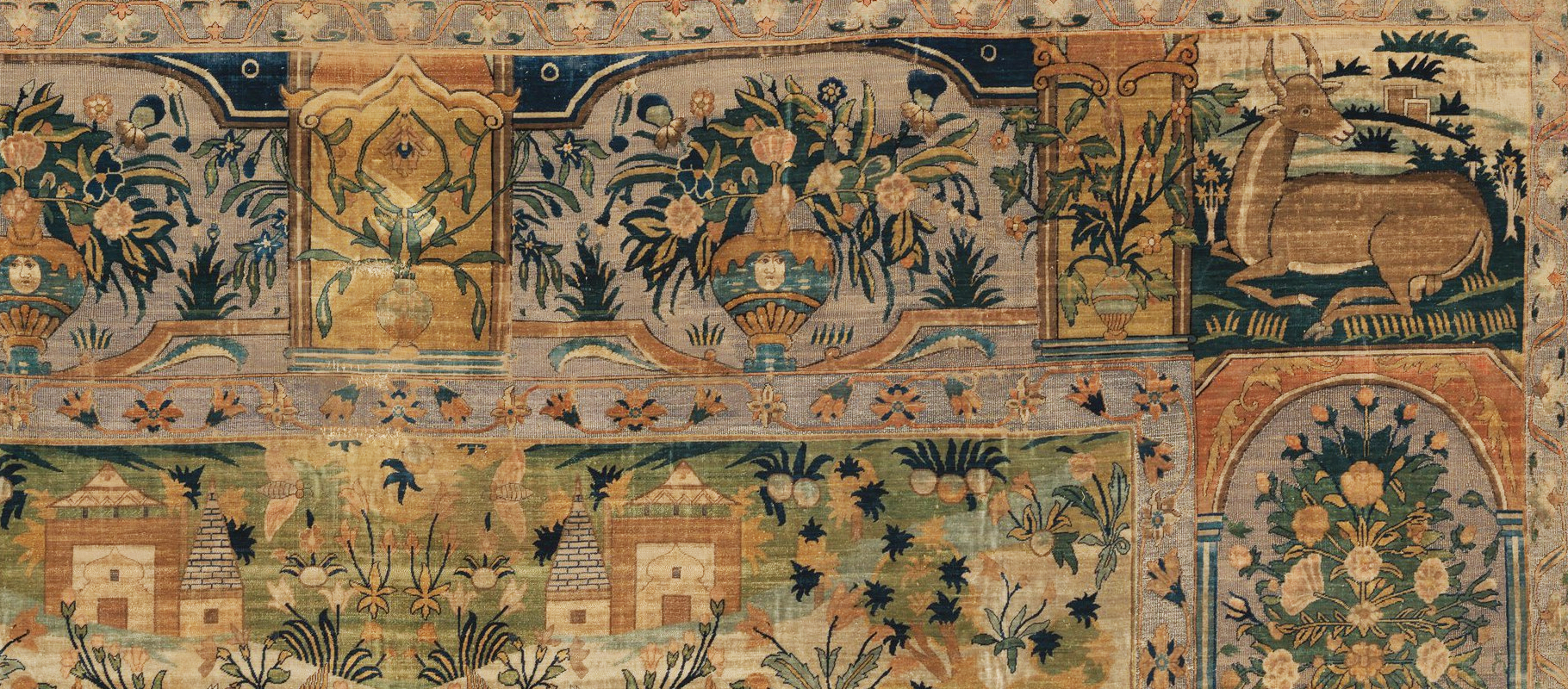
Another key feature is that Persian rugs use natural dyes. These are commonly called ‘vegetable dyes’ but are most frequently made from various plants and insects. For example, the most popular red dye can come from both roots and insects. These dyes have been used for thousands of years, dating back to ancient civilisations.
Water damage
A traditional bonding process goes into making natural dyes colourfast, but age may break them down, as well as original issues coming to light when a spill occurs. The dye can bleed into other areas of the rug, such as a dark red into neutral colours, due to improper colour setting during their creation or natural decay of the bonding element. Whilst this might not show up after a small spill, where the liquid is quickly soaked up and not rubbed in, a large amount of water will quickly breakdown the pigments, allowing them to spread beyond their place in the pattern.
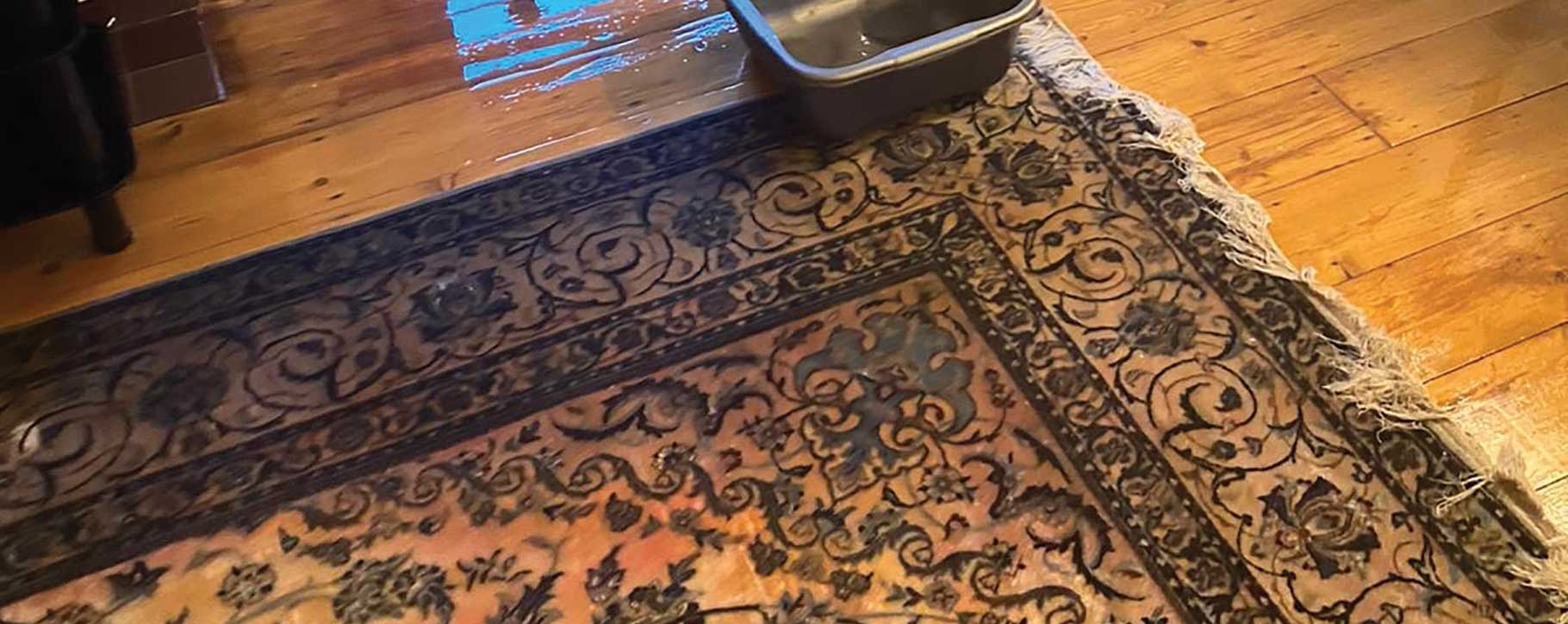
Water damage to textiles should be quickly acted upon, due to the dangers of fabric disintegration and mould if left untreated for some time. In the instance of this large Persian rug which measured 3.5m x 2.5m, it had been victim to a major household escape of water. The client’s insurance company immediately took it to the attention of Fine Art Restoration Company, who were able to quickly consult our specialist textile conservator for an assessment and restoration.
Upon inspection, the rug was a wool and silk mix. Our textiles conservator recommended a specialist immersion treatment which was specially tailored to these materials. The immersion also took into account the age and historic techniques which have gone into the creation of the textiles. The treatment removes foreign residues and stains, as well as acting to reduce the colour run.
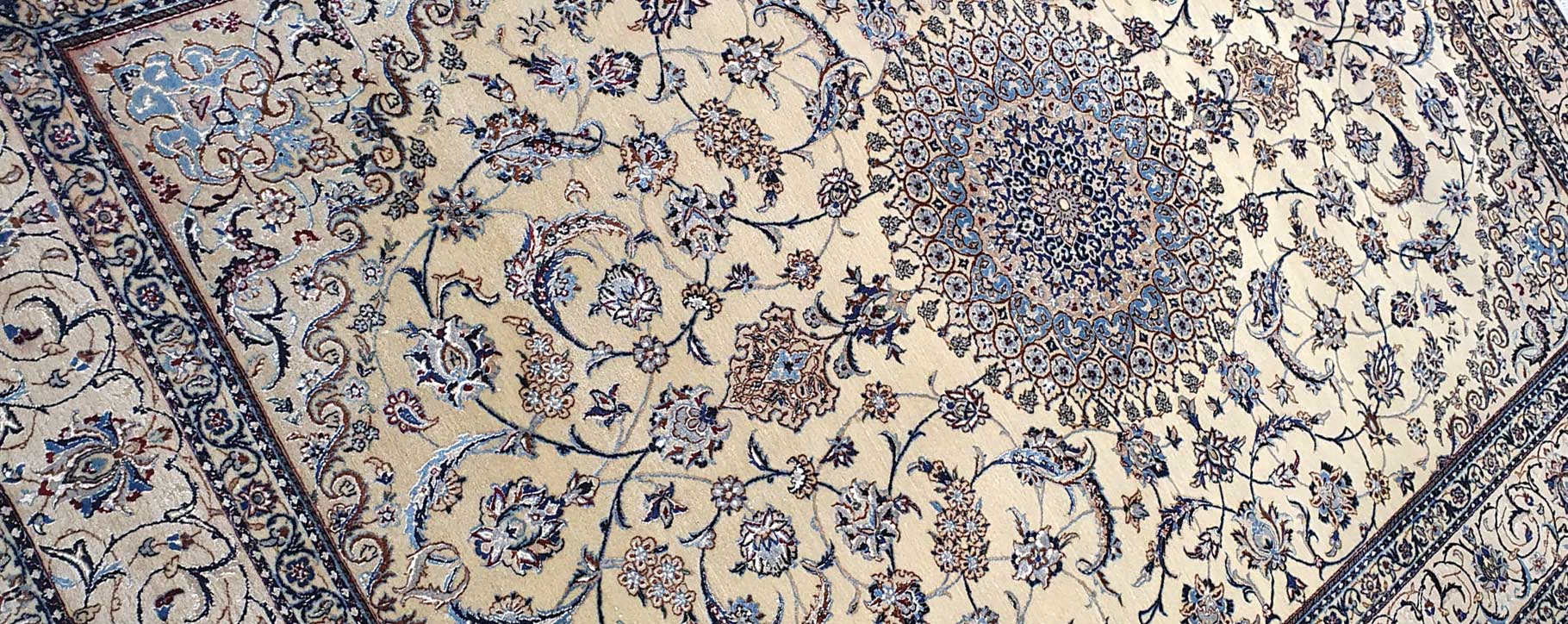
An immersion is never given as a treatment more than twice, as the conservator is wary of overcleaning the rug and reducing its overall saturation. Any areas of stubborn staining are given their own individual solutions.
It was not surprisingly that out of all of the colours in the pattern of the rug, the red had run more than the rest. This is because red-based shades are far more prone to this type of damage as their pigment is sometimes less stable. Red is also more likely to fade than any other colour. When a rug meets water or too much sun exposure, blue shades are the last to be affected, simply due to the nature of their dye. When a rug comes in for restoration and will be undergoing immersion, the conservator will test each area of dye to see how stable it is before safely proceeding.

Where any colour is missing from the rug, a skilled textile conservator will retouch with sympathetic shades, which will always match the age and natural wear of the wool. This can be done in extremely small areas with a syringe, to ensure that no areas are left uneven. The rug will also be carefully brushed in the correct direction of its weave, leaving it with a stable and even result. As symmetry is so important to the value and historic integrity of a Persian rug, this is always held as an important goal in the outcome of its restoration, along with its preservation.
Persian rug symbols
Persian designs are heavily symbolic. Many artistic styles from especially Islamic civilisations have a focus on metaphorical imagery and lettering, as scenes with literal representations of god or Muhammed are not acceptable for religious reasons. This Persian aesthetic merged with various cultures over history, including Christian nobility in the 13th century, who were buried in ornate Muslim shrouds of such designs, due to the great opulence associated with them.
Many of the symbols frequently found on antique rugs are derived from nature, here are some you may come across and what they represent:
Boteh (paisley shapes): fertility, this is the seed of life and eternal life.
Tree, vines: The tree of life, a reminder of the journey to heaven.
Elibelinde (triangle with hands on hips): a common motif of a mother goddess or fertility.
Mihrab (the shape of doorway): a gateway to paradise through worship.
Camels: endurance and strength.
Peonies: wealth and status.
Ram horns: male fertility.
Gul (medallion-like shapes): a display of divine symmetry.
Pitrak (diamond shapes): an eye or evil eye.
Haç (cross): protection, to cut the evil eye into four.
Çengel (hook): to ward off the evil eye.
Amulets (triangular shapes): sometimes the main medallion, protection from evil spirits.
Birds: pigeons and nightingale: good luck and love.
Peacock: immortality.

Owls and ravens: death and bad news.
Star: Unison, similar to yin and yang.
Tarak (comb): protection in birth and marriage.
Ejder (central motif or wave line, also known as ‘dragon’): protection.
Cypress tree: life after death
The patterns of Persian rugs hold a lot of significance in not only their shapes, but the colours used. Even the most abstract design can hold further virtues through the careful selection of shades throughout the woven tapestry. Once you can speak the language of colours featured in these rugs, you can then easily read the deeper meanings of the pattern.
Red: passion, vitality, joy, fire, earthly powers. The most common colour in Persian rugs.
Blue: loyalty, hope, safety, tranquillity, trust.
Yellow: happiness, the sun, radiance.
Gold: power, high status.
Green: abundance, vegetation, prosperity, health. Sacred in Islamic communities.
White or beige: purity.
Brown: fertility, life from the earth.
Black: death, though can also be used for purely aesthetic purposes in outlines.
If you would like advice or assistance with the cleaning and restoration of Persian rugs or other types of rugs, please contact Julia on 020 7112 7576 or via email at [email protected] and we would be happy to help.






